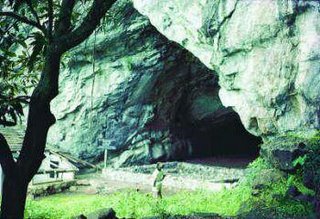Gaalla, Kaali, Galle, all three terms refer to the same location which is of course the city of Galle in its Sinhala, Tamil and English representations respectively. Hence it’s a proper noun. Now wonder if someone was to tell you; whatever the language may be, we should use only one of the above mentioned 3 terms! What would you think? Keep on thinking, but let me continue…
The origin of this scenario is due to a couple of view points which I’ve come across in the recent past while dealing with people who are engaged in content translation. The issue seems to be more aggravated when it comes to translating Technical terms such as ones used in the field of Computing or IT. Basically there are folks who say that we should translate each English term into Sinhala (or Tamil), while some others say that we need not do so and should continue using the English terms in our language which are now common. Examples are mouse, computer, bus or their subtle variations (in Sinhala) such as mavusaya, computer eka, bus eka, etc. There is a subgroup of this sect saying we should only translate the pronouns while the proper nouns aren’t to be touched!
I do agree with the latter to a certain extent, since a main objective of translating is to increase the normal person’s understanding and grasp of the term that is hindered by the unfamiliar language. Just imagine having to figure out what does mooshikaya (a term used for ‘mouse’) or daththa sanghithawa (a term used for ‘database’) really mean? But then the more sensitive arguments creep in. Isn’t this harmful to our language? Aren’t we compromising the unique identity of our language? (Consider Sinhala as an example) My answer is; yes, to a certain extent we do. The thing to remember here is that our language has evolved throughout centuries with many lexical additions to it; examples are sapaththu, kussiya, almaariya, etc. Note that I’m certainly not promoting something similar to the immature ‘FM channel vocabularies’ which are a garble beyond tolerance!
There are many practical problems when dealing with one-to-one translations where you need to invent certain new words, since the other language hasn’t got anything similar that could be used as an alternative. This situation itself is a bit tricky if you consider some inventions done so far. Two examples are Guwan Viduliya (Radio) and Roopavahiniya (Television). Neither is a radio similar to an airborne current nor does a TV let pictures flow of it, since it emits sounds as well. Let that be as it is since its common usage now which any person understands. This could also be referred to as a kind of ‘normalization’ where a term becomes common and comes into general use after some time, although resistance is to be expected when it’s introduced initially.
If this trend is to be followed in future, I suggest setting up a common entity or mechanism in order to regulate and/or moderate these newly invented terms, as otherwise it would add to more confusion with each inventor trying to promote their own as the correct term. For example, I can mention about a half-a-dozen Sinhala terms used for the word ‘Database’. I'd bet it wasn't the same at that time when the term 'Roopavahiniya' was introduced.
What I find to be most interesting out of these perspectives is that ‘proper nouns shouldn’t be translated’. Ok, so I’m alright with that theory yet again to a certain extent only. As I’ve mentioned at the start of this article, a name of a location is a proper noun as well, but many of them are already ‘translated’ (there exists representations in other languages).
The reformists suggest that only one name be used for such locations. How are we to find the most appropriate name in that case? As an example, Galle may be called Gaalla in all three languages since it’s used by the majority. But for instance, can the same be applied to Jaffna as Yaalpaanam. Wouldn’t history have to be traced in that case? One may argue that it should be called Dambakolapatuna or something since that’s the oldest known name, although it’s in Sinhala. It would be the same for places like Trincomalee, Mannar, etc. Aren’t we inviting more trouble if we had to adopt this strategy? This applies to any other language or place in the world, not only Sri Lanka and the Sinhala/Tamil languages. We may perceive names such as Colombo, Batticaloa, Negombo to be English whereas the origin of these date back to the colonial era and languages used at that time, which were not necessarily English.
Personally, I prefer accepting these names as they are, instead of referring to Germany as Deutschland compared to Germaniya in Sinhala! It also adds variety and uniqueness to a language, culture or society. Best is to strike a balance, with neither extreme reached.





